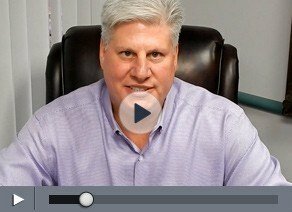-
Getting Back Into Fitness After Joint Replacement Surgery
Posted on: 21 May, 2018Source: Health Central
If you've recently had joint replacement surgery, getting back into shape after surgery will help you to maximize joint healing and function.
-
Timeline: Hip Replacement Surgery
Posted on: 21 May, 2018Source: WebMD
Recovery from hip replacement surgery can be a long process. What should you expect? Everyone's case is different, but here's a rough outline of what will happen after hip replacement surgery - from the day of the operation to three months later.
-
What exercises can you do after a hip replacement operation? The secrets to a healthy recovery
Posted on: 21 May, 2018Source: BT
If you've had a hip replacement operation – whereby a damaged hip joint is replaced with an artificial one – chances are increased mobility is one of your desired outcomes from the surgery. And although a recent survey concluded that the surgery doesn't improve the physical activity levels of patients, there is plenty you can do to help your recovery and build up your levels of fitness.
-
16 Things You Need to Know About Knee Replacement
Posted on: 21 May, 2018Source: Reader's Digest
When a damaged knee impacts everything you do—even getting out of a chair or up and down stairs—you may have to consider knee replacement. Here's what you need to know.
-
After Knee Replacement, Play On
Posted on: 21 May, 2018Source: Health Day
Knee replacement patients can continue to enjoy sports—such as skiing, tennis and dancing—without worrying that high-impact activities might compromise their new joint, a small, new study finds.
-
Ditch the Golf Cart. Your Aging Knees Won't Mind
Posted on: 21 May, 2018Source: Health Day
Golfers with knee arthritis should park the golf cart and walk the links instead, researchers say.
-
Menopause May Worsen Rheumatoid Arthritis Symptoms
Posted on: 21 May, 2018Source: Health Day
Menopause may speed physical decline in women with rheumatoid arthritis (RA), a new study suggests.
-
Optimizing range of motion may prevent a stiff knee after TKA
Posted on: 18 May, 2018Source: Healio
Knee stiffness following total knee arthroplasty is a rare complication, which is multifactorial and can be prevented with techniques that help optimize knee range of motion, according to a presenter.
-
What is a hyperextended knee?
Posted on: 18 May, 2018Source: Medical news today
Knee pain and injuries are widespread, particularly in very active people and athletes. A hyperextended knee is a type of injury to the knee caused by the knee bending too far backward. This painful injury is often easy for a doctor to spot and treat.
-
Stem cells may significantly improve tendon healing by regulating inflammation
Posted on: 20 June, 2017Source: Science Daily
New research published online in The FASEB Journal suggests that tendon stem may be able to significantly improve tendon healing by regulating inflammation, which contributes to scar-like tendon healing and chronic matrix degradation. This has implications for the treatment of acute tendon injuries and chronic tendon disease.
Dr. Goldman voted Best Orthopedic Surgeon in D Magazine 2014
America's Top Orthopedist Award
Consumers Research Council of America
Total Joint Replacement 2007-2013
Castle Connolly "Top Doctors"
Award - Orthopaedic Surgery 2014


 Knee
Knee Hip
Hip Shoulder
Shoulder
 For nine months after my wife's...
For nine months after my wife's...
 Dr. Goldman
Dr. Goldman



